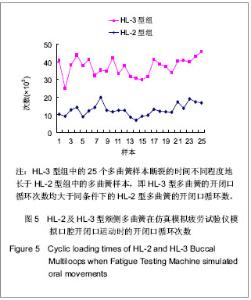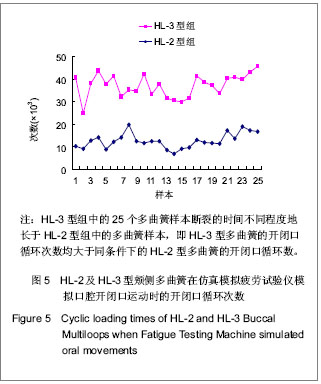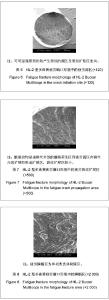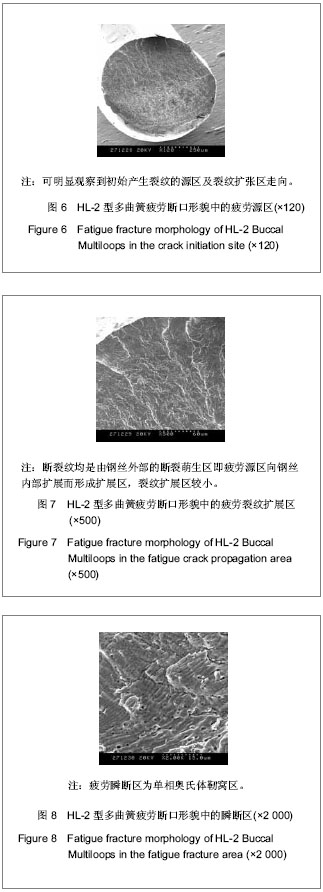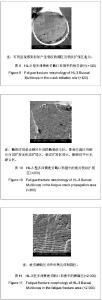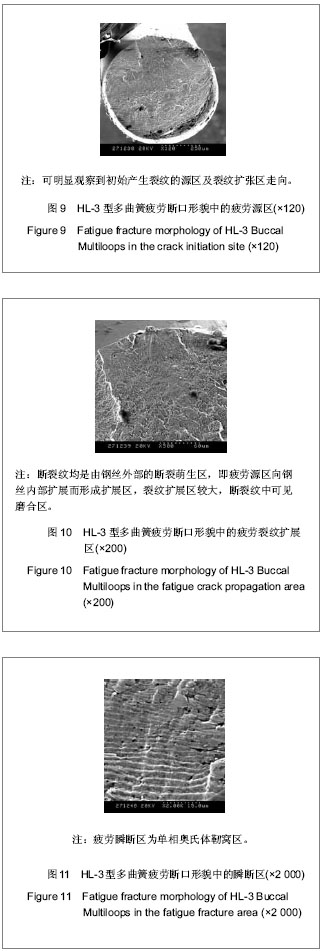| [1] 何志伟,侯录,赵一松,等.颊侧多曲簧活动矫治器的设计与应用[J].中国组织工程研究与临床康复,2008,12(39):7631-7635.
[2] 黄晓冰,付红英,王泽雄.生长期下颌后缩型安氏Ⅱ类错颌双期矫治的临床研究[J].中国初级卫生保健,2004,18(9):80-81.
[3] 段玉成,伍军.Herbst矫治器双期拔牙矫治与单纯拔牙矫治Angle Ⅱ1类下颌后缩的临床对比[J].江西医学院学报,2008,48(2): 73-80. 牙合
[4] 赵祝,李东,宋镜明,等.安氏Ⅲ类错牙合患者下颌骨生长发育特点[J].实用口腔医学杂志,2011,27(2):222-225.
[5] 朱丽亚,李沙.反式Twin-Block与Frankel-Ⅲ治疗安氏Ⅲ类错牙合作用机制的比较[J].实用口腔医学杂志,2010,26(2):236-239.
[6] 侯录,徐实谦.颊侧多曲簧空间三维测力仪,ZL200810064015 中华人民共和国国家知识产权局(证书:第965078号).
[7] 侯录,徐实谦.颊侧多曲簧矫治器及颊侧多曲簧胎具,ZL2006 20021913.2中华人民共和国国家知识产权局(证书:第965078号).
[8] 宋宇,王春玲,刘东旭.前方牵引结合上颌扩弓装置早期治疗骨性Ⅲ类错牙合的软组织变化[J].临床口腔医学杂志,2001,17(1): 45-46.
[9] 刘红,刘延军,吕文凯,等.改良固定反式双阻板矫治器联合前牵矫治安氏Ⅲ类前牙反牙合对颞下颌关节的影响[J].口腔医学,2007, 27(4):207-209.
[10] 唐建立.双曲舌簧结合牙合垫矫治前牙反牙合临床分析[J].中国实用医学,2010,5(9):74-75.
[11] 何艾娥,江卫东,熊贵忠. 牙合垫舌簧活动矫治器矫治乳前牙反牙合三种施力装置的疗效对比研究[J].临床口腔医学杂志,2011, 27(6):83-84.
[12] 苗楠,侯录,徐实谦.颊侧多曲簧矫治器在开闭口运动中的三维力值变化[J].中国组织工程研究与临床康复,2010,14(13):2307- 2310.
[13] 许妍,杨晓江,高晓辉.骨性Ⅲ类错牙合患者开闭口时下颌运动特点的初步研究[J].北京口腔医学,2009,17(6):321-323.
[14] 刘笑笑.颊侧多曲簧矫治器对乳恒牙替换影响的临床观察[D].哈尔滨医科大学,2009.
[15] 王阿娜,侯录,隋长德.颊侧多曲簧矫治器对颞下颌关节间隙的影响[J].中国组织工程研究与临床康复,2011,15(13):2463-2466.
[16] 梅新华,黄声富.高、低角型骨性安氏Ⅲ类错牙合颞下颌关节凹位置及形态的对比研究[J].口腔医学研究,2009,25(3):305-307.
[17] 刘洋,侯录,徐实谦,等.颊侧多曲簧矫治器有限元模型的建立[J].中外健康文摘,2011,8(35):146.
[18] 杨柯,任玲,任伊宾.医用不锈钢研究新进展[J].中国医疗器械信息,2012,18(7):14-18.
[19] 赵建生.断裂力学及断裂物理[M].武汉:华中科技大学出版社,2003.
[20] 李岳.颊侧多曲簧在开闭口运动中疲劳折断规律的研究[D].哈尔滨医科大学,2011.
[21] 胡晓阳.浅谈金属材料疲劳断裂的现象及在生产中的应用[J].机械管理开发,2011,26(5):115.
[22] 樊世清.金属疲劳断裂过程中的突变研究[D].东北大学,1996.
[23] 邓忠,孔凡亚.1Cr18Ni10Ti不锈钢疲劳性能研究[J].飞机设计, 2002,6(2):66-72.
[24] 侯军芳,白鸿柏,李冬伟,等.金属橡胶用0Cr18Ni9Ti不锈钢丝疲劳断裂机理研究[J].中国材料科技与设备,2007,4(2):75-78.
[25] 张红霞,王文先,卫英慧,等.AZ31B镁合金及其焊接接头的疲劳断裂机理[J].中国有色金属学报,2011,21(6):1225-1233.
[26] 崔约贤,王长利.金属断口分析[M].黑龙江:哈尔滨工业大学出版社,1998.
[27] 王煦,陈国宏,王家庆,等.钢芯铝绞架空导线微动疲劳断口形貌[J].中国有色金属学报,2012,22(1):194-200.
[28] 敖同江,袁小平,杨四维,等.替牙晚期安氏Ⅲ类错牙合畸形矫治后的髁突和下颌位置变化[J].国际口腔医学杂志,2012,39(4):440- 445.
[29] 刘冰,詹春华,司徒惠琼.安氏Ⅱ类1分类错牙合双期治疗的X线头影测量分析[J].中国美容医学,2010,19(9):1358-1360.
[30] 杨波,张琴.双期和单期矫治安氏Ⅱ类Ⅰ分类严重深覆盖深覆盖错牙合临床病例比较[J].中国医药指南,2008,6(17):229-231.
[31] 卢红飞,麦志辉,艾虹,等.Twin-block治疗下颌后缩患者软组织变化的研究[J].中华全科医学,2009,7(6):559-560.
[32] 张丽雯,胡敏.开牙合畸形的病因、诊断及临床治疗[J].现代口腔医学杂志,2007,21(4):428-429.
[33] 李壬梅.运用种植体支抗治疗开牙合的研究进展[J].国际口腔医学杂志,2011,38(3):343-348.
[34] 曾祥龙.现代口腔正畸学诊疗手册[M].北京:北京医科大学出版社,2000.
[35] 傅民魁.口腔正畸专科教程[M].北京:人民卫生出版社,2007.
[36] 周彦恒.安格尔Ⅲ类错牙合畸形的诊断与治疗[J].口腔正畸学,2000, 7(1):40-43.
[37] 钟群鹏,赵子华,张峥.断口学的发展及微观断裂机理研究[J].机械强度,2005,27(3):358-370.
[38] 寇宏宁,刘国权,杨建春,等.金属橡胶用Cr-Ni—Mn系不锈钢丝的微观组织及力学性能研究[J].航空材料学报,2006,26(4):24-28.
[39] 张辉,战德松,孙晓菊,等.医用不锈钢材料的腐蚀、磨损及其生物相容性[J].中国组织工程研究与临床康复,2010,14(34):6377- 6380.
[40] 张卫方,陶春虎,习年生,等.断口反推疲劳应力及其在叶片断裂分析中的应用[J].材料工程,2003,48(1):38-41. |
